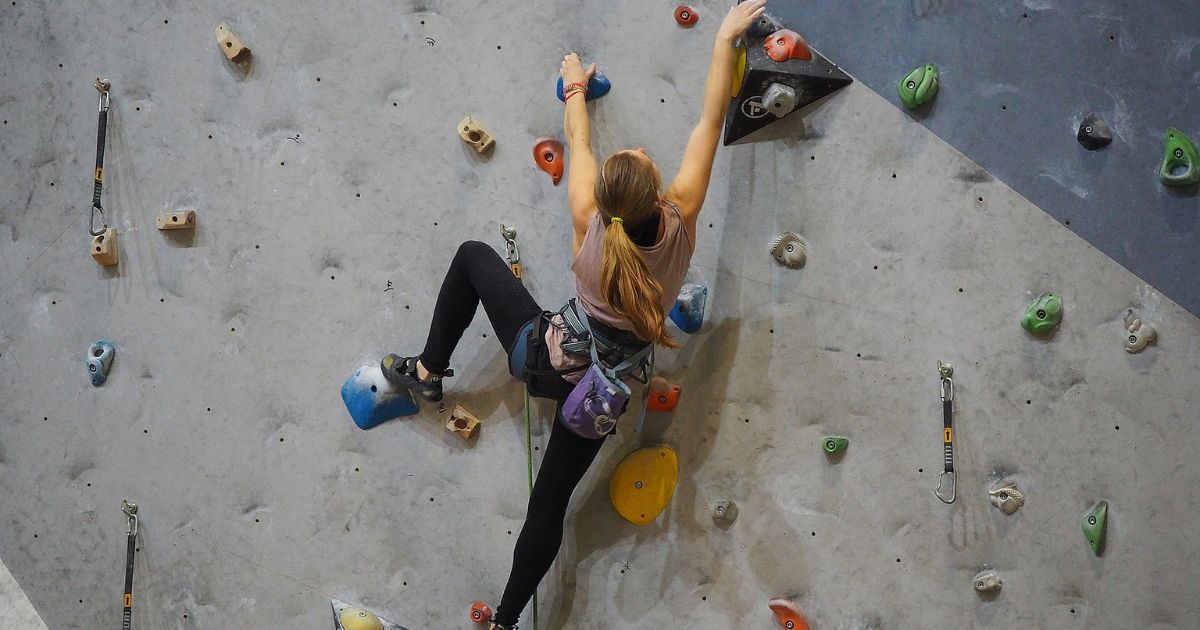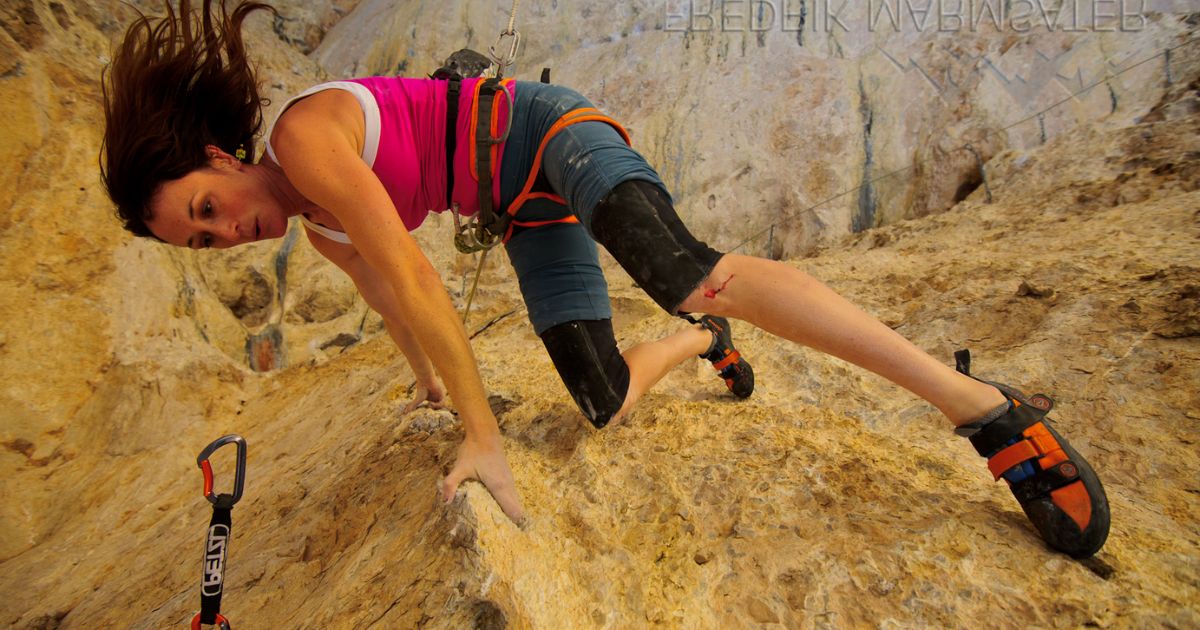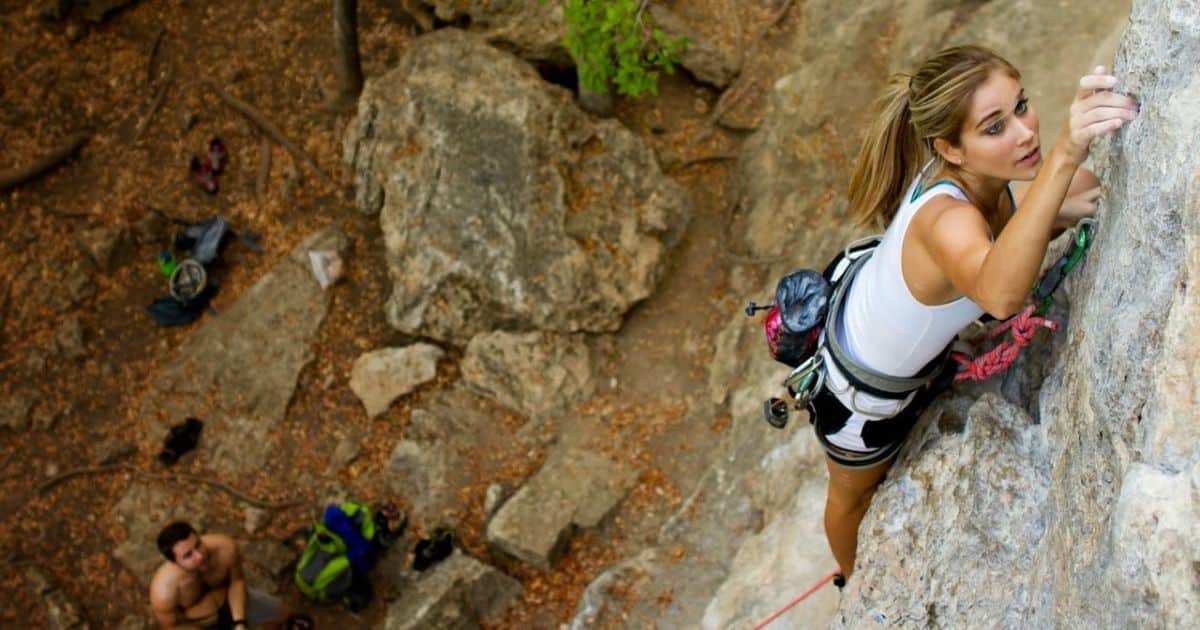Indoor rock climbing, a dynamic and exhilarating activity, requires the right attire to ensure both comfort and safety. Picture this: you step into the climbing gym, the air buzzing with anticipation. Like a skilled mountaineer preparing for a daring ascent, your clothing becomes your armor, enabling you to conquer the challenging terrain. In this article, we will delve into the intricacies of what to wear for indoor rock climbing, providing expert insights and valuable tips to help you feel at home in the vertical world.
Key Takeaways
- Choose form-fitting, stretchable pants made from durable, moisture-wicking materials.
- Look for pants with reinforced knees and seat to prevent wear and tear.
- Opt for climbing shoes that fit snugly and provide excellent grip.
- Layer clothing with a moisture-wicking base layer, insulating mid-layer, and a waterproof outer layer for temperature control.
Comfortable and Flexible Clothing
Opt for one or two pairs of form-fitting, stretchable pants that allow for unrestricted movement during your indoor rock climbing sessions. Choose pants made from durable, moisture-wicking materials that provide comfort and flexibility. Look for pants with reinforced knees and seat, as these areas are prone to wear and tear.
Additionally, consider pants with a gusseted crotch, which enhances mobility and prevents uncomfortable bunching. Avoid loose or baggy pants that can snag on holds or restrict your range of motion. Remember, the key is to find pants that strike the right balance between flexibility and durability. Transitioning into the next section about climbing shoes, it is important to wear footwear that offers optimal grip and support on the climbing wall.
Climbing Shoes
When it comes to indoor rock climbing, the importance of proper climbing shoes cannot be overstated. The grip provided by the shoes is crucial for maintaining traction on the climbing wall and preventing slips or falls. Finding the right fit is essential, as shoes that are too tight can cause discomfort and restrict movement, while shoes that are too loose may compromise stability. Additionally, taking care of your climbing shoes by cleaning them regularly and avoiding excessive wear and tear can help prolong their lifespan and maintain their performance.
Shoe Grip Importance
The importance of climbing shoe grip cannot be overstated in indoor rock climbing. A secure and reliable grip is crucial for climbers to maintain balance and control while navigating the various holds and surfaces on the climbing wall. The grip of climbing shoes is determined by several factors, including the rubber compound used in the outsole and the design of the tread pattern. The rubber compound should be sticky and durable, providing optimal friction against the climbing wall.
The tread pattern should feature small, well-spaced lugs or dots to maximize contact points with the wall. Climbing shoes with excellent grip will enhance a climber’s confidence and performance, allowing them to execute precise foot placements and maintain stability even on challenging routes. Investing in climbing shoes with superior grip is essential for climbers seeking a sense of belonging and mastery in the indoor rock climbing community.
Finding the Right Fit
A crucial step in preparing for indoor rock climbing is finding the right fit for your climbing shoes. The fit of your shoes can greatly impact your climbing performance and overall comfort. Here are four important factors to consider when finding the right fit for your climbing shoes:
- Sizing: Climbing shoes should fit snugly, without any excess space or tightness. They should feel like a second skin, allowing for precise foot placements and maximum sensitivity.
- Toe Shape: Different climbing shoes have varying toe shapes, such as downturned, flat, or asymmetric. The toe shape you choose depends on your climbing style and preferences.
- Closure System: Climbing shoes can have different closure systems, including lace-up, velcro, or slip-on. Each closure system offers different levels of adjustability and convenience.
- Break-in Period: It is important to consider the break-in period for climbing shoes. They may initially feel tight, but they should gradually mold to the shape of your feet for a more comfortable fit.
Finding the right fit for your climbing shoes is essential for a successful and enjoyable indoor rock climbing experience.
Shoe Care Tips
Proper maintenance is crucial for prolonging the lifespan and performance of your climbing shoes. Taking care of your climbing shoes will not only help them last longer but also ensure optimal performance on the rock. Here are some shoe care tips to keep in mind:
- Cleaning: After each climbing session, remove any dirt or debris from your shoes using a soft brush or cloth. This will prevent the build-up of grime that can affect the shoe’s grip.
- Drying: Allow your shoes to air dry naturally after each use. Avoid exposing them to direct heat sources, as excessive heat can damage the shoe’s materials.
- Storage: Store your climbing shoes in a cool, dry place to prevent mold and mildew. Avoid leaving them in a damp gym bag or a hot car.
- Resoling: As your climbing shoes wear down, consider getting them resoled by a professional. This will restore the shoe’s grip and extend its lifespan.
Moisture-Wicking Base Layers
Moisture-wicking base layers play a crucial role in indoor rock climbing attire due to their ability to provide breathability and sweat control benefits. When engaging in intense physical activity such as climbing, it is important to wear base layers that can effectively manage moisture and keep the body dry. These garments are designed to pull sweat away from the skin, allowing it to evaporate quickly and prevent discomfort caused by excess moisture.
Importance of Breathability
To optimize comfort and performance during indoor rock climbing, it is crucial to prioritize breathability in your choice of base layers. Breathable base layers are designed to wick away moisture from your skin, keeping you dry and comfortable throughout your climbing session. Here are four reasons why breathability is essential for indoor rock climbing:
- Improved sweat management: Breathable base layers allow sweat to evaporate quickly, preventing it from accumulating on your skin and causing discomfort.
- Temperature regulation: Breathable fabrics help regulate your body temperature by allowing air to circulate, keeping you cool when it’s hot and warm when it’s cold.
- Reduced odor: Moisture-wicking base layers minimize the growth of bacteria, which is the main cause of unpleasant odors.
- Enhanced mobility: Lightweight and breathable materials provide a greater range of motion, allowing you to move freely and effortlessly on the climbing wall.
Sweat Control Benefits
The importance of breathability extends to sweat control benefits when it comes to selecting moisture-wicking base layers for indoor rock climbing. Sweat control is crucial in any physical activity, as excessive moisture can lead to discomfort, chafing, and even skin irritation. Moisture-wicking base layers are designed to pull sweat away from the body, allowing it to evaporate quickly and keeping you dry. These base layers are typically made from synthetic materials such as polyester or nylon, which have excellent moisture-wicking properties.
To better understand the benefits of moisture-wicking base layers, let’s take a look at the following table:
| Benefits of Moisture-Wicking Base Layers | Description |
|---|---|
| 1. Sweat Control | Moisture-wicking fabrics pull sweat away from the body, keeping you dry and comfortable. |
| 2. Quick Drying | These base layers dry quickly, preventing moisture buildup and reducing the risk of skin irritation. |
| 3. Odor Control | Moisture-wicking materials help to minimize the growth of odor-causing bacteria, keeping you fresh during your climbing session. |
| 4. Temperature Regulation | Moisture-wicking fabrics help to regulate your body temperature, keeping you cool in hot conditions and warm in cold environments. |
Climbing Harness
A suitable climbing harness is an essential piece of equipment for indoor rock climbing. When choosing a climbing harness, it is important to consider factors such as comfort, fit, durability, and safety features. Here are four key features of a climbing harness that will make you feel confident and secure during your indoor climbing sessions:
- Comfortable Padding: Look for a harness with ample padding in the waist and leg loops to prevent discomfort and pressure points during extended climbs.
- Adjustable Fit: A harness with adjustable straps allows for a personalized fit, ensuring maximum comfort and freedom of movement.
- Strong and Durable Materials: Opt for a harness made from high-quality materials that can withstand the wear and tear of frequent indoor climbing sessions.
- Safety Features: Look for a harness with a secure buckle system and strong tie-in points to ensure your safety while climbing.
Helmet and Safety Gear
For optimal safety during indoor rock climbing, it is important to wear appropriate protective gear, including a helmet and other safety equipment. The helmet is a crucial piece of gear that protects the head from potential falls or impacts with the wall or other objects. It should fit snugly and have a chin strap to ensure it stays in place during climbing. In addition to the helmet, climbers should also wear other safety gear such as a harness, belay device, and climbing shoes. These items provide stability, control, and protection while ascending the wall. A harness distributes the load evenly across the body, while a belay device helps control the rope during climbing. Climbing shoes provide grip and support on the wall, enhancing the climber’s ability to maneuver. The table below summarizes the essential safety gear for indoor rock climbing:
| Safety Gear | Description | Purpose |
|---|---|---|
| Helmet | Protects the head from falls or impacts | Prevent head injuries |
| Harness | Distributes load evenly across the body | Provides stability and support |
| Belay Device | Controls the rope during climbing | Assists with belaying and lowering climbers |
| Climbing Shoes | Provide grip and support on the wall | Enhance ability to maneuver and climb effectively |
| Chalk Bag | Holds chalk for better grip | Absorbs moisture and sweat, improving grip |
Chalk Bag and Chalk
To enhance grip and prevent slipping, climbers often utilize a chalk bag and chalk while indoor rock climbing. Chalk is a white, powdery substance that helps absorb moisture from the hands, allowing climbers to maintain a firm grip on holds and surfaces. The chalk bag is a small pouch that is typically attached to a climber’s harness or waist belt, providing easy access to the chalk during climbs. Here are four essential items related to chalk bag and chalk that climbers should consider:
- High-quality climbing chalk: Opt for a chalk that is specifically designed for climbing, as it offers superior grip and lasts longer.
- Chalk bag with a secure closure: Look for a chalk bag with a tight-fitting closure system, such as a drawstring or zipper, to prevent chalk spills during climbs.
- Chalk brush: A chalk brush is used to clean holds and remove excess chalk, ensuring optimal grip on the rock.
- Chalk refillable pouch: Consider a refillable chalk pouch that allows you to easily replenish your chalk supply, reducing waste and ensuring you always have enough chalk for your climbs.
Layering Options for Temperature Control
To maintain optimal comfort and adaptability while indoor rock climbing, it is crucial to consider layering options for temperature control. Layering involves wearing multiple garments that can be added or removed as needed to regulate body temperature. The base layer is the foundation of the layering system and should be moisture-wicking to keep the skin dry.
A mid-layer provides insulation and retains body heat, while also allowing moisture to escape. Fleece jackets or synthetic insulated vests are popular choices for this layer. Finally, the outer layer, such as a waterproof and breathable shell, protects against wind, rain, and snow. This layering system allows climbers to adjust their clothing to accommodate changes in temperature and activity level, ensuring comfort and performance during their indoor rock climbing sessions.
Frequently Asked Questions
Are There Any Specific Clothing Brands or Materials That Are Recommended for Indoor Rock Climbing?
When considering clothing for indoor rock climbing, it is important to prioritize comfort, flexibility, and durability. Look for brands that specialize in athletic wear, made from breathable and moisture-wicking materials such as nylon or polyester blends.
How Often Should Climbing Shoes Be Replaced?
Climbing shoes should be replaced when the rubber on the sole becomes worn down, compromising grip and performance. Regular inspections of the shoes’ condition, as well as considering the frequency and intensity of use, can help determine the appropriate time for replacement.
Can I Wear Regular Athletic Socks With Climbing Shoes, or Do I Need Special Climbing Socks?
When it comes to wearing socks with climbing shoes, it is recommended to use special climbing socks. Regular athletic socks may not provide the necessary grip, moisture-wicking, and durability required for indoor rock climbing activities.
Is It Necessary to Wear a Helmet for Indoor Rock Climbing?
To ensure safety and minimize the risk of head injuries, it is highly recommended to wear a helmet while engaging in indoor rock climbing. This protective gear provides crucial protection against potential falls and impacts.
Are There Any Specific Safety Gear Items That Are Required for Indoor Rock Climbing, Besides a Harness and Helmet?
Indoor rock climbing requires specific safety gear in addition to a harness and helmet. These items include climbing shoes with sticky rubber soles for better traction, chalk for improved grip, and a belay device for controlled descent and protection.
Conclusion
In conclusion, proper attire for indoor rock climbing is crucial for comfort, safety, and performance. By donning comfortable and flexible clothing, wearing climbing shoes, and utilizing moisture-wicking base layers, climbers can enhance their experience and avoid unnecessary discomfort. Additionally, investing in a climbing harness, helmet, and safety gear is essential for protection. Lastly, a chalk bag and chalk aid in improving grip. Remember, layering options for temperature control are also advantageous. Don’t underestimate the impact of appropriate attire on your climbing journey.










